Some of the links in this post may be affiliate links.
Philodendron scandens, otherwise known as Heart Leaf Philodendron, is quite simply one of the easiest to grow houseplants there is! Keep reading and I will tell you how I grew a 13 foot (4 meters) long Philodendron scandens!
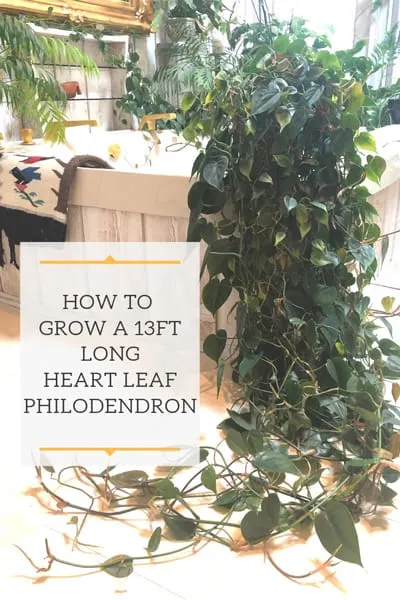
Yes, this is one of the most common houseplants. But certain houseplants become popular for a reason! Personally, I’d much rather have a well grown specimen of a common houseplant than a tiny little rare plant.
I have a mix of both in my home, but many of my plants are easily obtained and I like to grow them as specimens!
My Philodendron scandens, or Heart Leaf Philodendrons, are no exception. Let me explain how I care for my plants and eventually I will get to my 13ft long Philodendron!
And also some explanations of Philodendron naming that you probably didn’t know.
Table of Contents
PHILODENDRON SCANDENS CARE
I have also written about the very closely related Philodendron Brasil, and the care requirements are extremely similar! Let’s take a look at the difference between the two.
Here is Philodendron Brasil
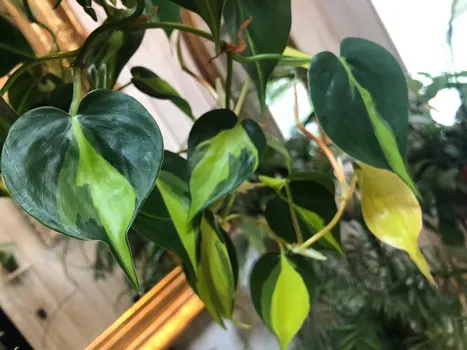
And here is the plain green Philodendron scandens, or Heart Leaf Philodendron
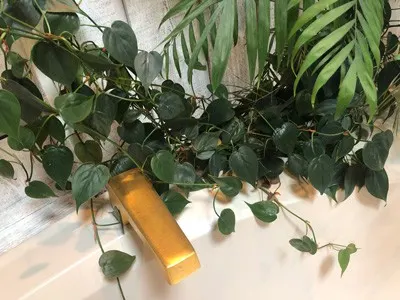
Really the only difference is that Brasil is variegated and the other is not. Actually they are supposedly the same species, but more on that later!
I’ll go through how to care for this plant and end with the mystery and confusion that is botanical nomenclature.
One last thing before I go into care instructions. Many people have asked me what the difference is between Pothos and Philodendron.
Well, they are completely different plants. Pothos belongs to the Epipremnum genus and Philodendron belongs to…well…the Philodendron genus.
If you’d like to read about how to grow Pothos, be sure to check out my blog post!
LIGHT
The plain old green leaved Philodendron scandens is a very versatile plant and it can grow, and even thrive, in lower light situations.
I have 2 of these plants at home. One of them is a specimen plant that I’ve had for several years.
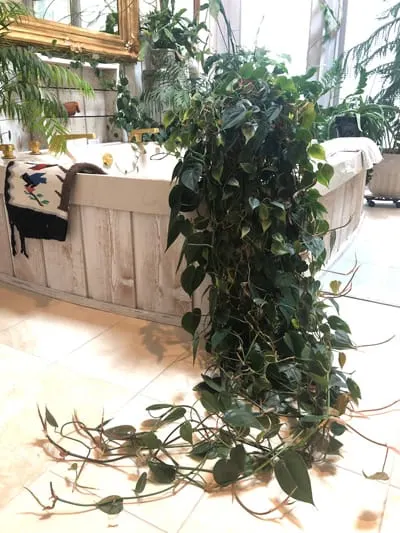
And the other is a 13 foot (4 meter) plant that is still growing in a 6 inch pot along with a parlor palm! Parlor palms, by the way, are the easiest indoor palms that you can grow.
So be sure to check out my Chamaedorea elegans, or parlor palm, blog post for more care info!
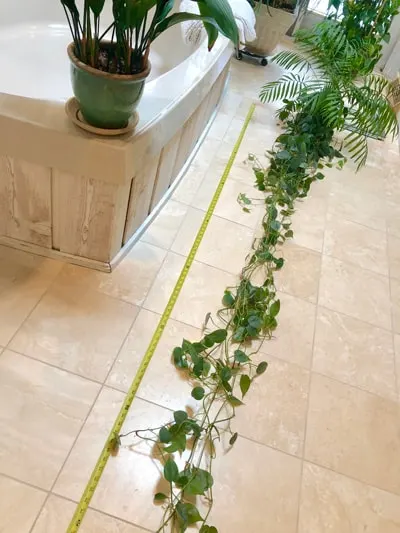
I have both of these plants growing in front of Eastern windows and they are thriving. North windows are also good for these plants.
Avoid locations with extended amounts of direct sun because Philodendron scandens won’t like it.
One difference between the plain green leaf variety, and the variegated Brasil, is a couple things.
First, the plain green plant is a much more vigorous grower. Variegated plants have less chlorophyll and thus are not as robust growers. This really goes for ANY variegated plant!
The other difference is that the plain green kind will be able to grow in darker conditions better than its variegated cousin. Some variegated plants need brighter light in order to bring out their variegation.
I’m not trying to steer you away from variegated plants, but I wanted to point out these aspects!
TEMPERATURE
Like most leafy tropical plants, they are generally comfortable in temperatures where humans are comfortable.
Avoid minimum night time temperatures below 55F (about 13C). Days should be much warmer. Keep this in mind if you like to move your houseplants outdoors during the warm months.
WATERING
For most of my houseplants, I follow the same approach to watering. I water everything the same way. The only thing I vary is the extent to which plants dry out in between watering.
For all my tropical foliage plants, I water thoroughly. Then I wait for the top part of the soil to dry out a bit. I normally use my finger to feel how dry the soil is. And then I water thoroughly again.
Philodendron scandens does not like to dry out completely so avoid that if you can! If you let it happen occasionally, it’s no huge deal, but don’t make a habit of it! (Otherwise you won’t be able to grow your own 13 foot plant!)
So each time you water, give it a nice thorough watering until water comes out of the drainage hole. Never let this plant sit in water for extended periods of time otherwise you might run the risk of root rot.
FERTILIZING
For best results with your houseplants, you should always follow a regular schedule of fertilizing throughout the growing season. I fertilize year round except during the winter.
My favorite fertilizer is now Dyna Gro Grow. It is a little pricier than some fertilizers, but in the long run it will be the best for your plants!
I achieve great results with this fertilizer. It is urea-free and contains all the major macro and micro nutrients that plants need. Not all fertilizers are complete fertilizers, but this one is.
Dyna Gro has plenty of different fertilizers, but Dyna Gro Grow is a great all purpose one that you can use for all your plants.
Dyna Gro has plenty of different fertilizers, but Dyna Gro Grow is a great all purpose one that you can use for all your plants.
HUMIDITY
Philodendrons are jungle plants so of course they like higher humidity. Do you have to go out of your way though for Philodendron scandens?
Not really! They tolerate average indoor conditions very well. If you are able to provide higher humidity, they will benefit, but they are pretty easy going plants!
If you do want to read up on humidity and go the extra mile for your plants, be sure to read my humidity blog post and get the scoop on effective, and ineffective ways, to
REPOTTING
Quick story on my 13 foot Philodendron scandens. It has been in the same 6 inch pot, together with a parlor palm, for several years!
Should I have repotted it by now? Probably. But that’s really a feat! These are tough plants. But I suppose it is time to repot.
Instead of regurgitating steps on how to repot a pot bound houseplant, read my blog post on exactly that topic. It is illustrated and easy to follow so use it when you need to repot a plant!
PROPAGATING PHILODENDRON SCANDENS
It is super easy to propagate this plant. Take a look at the photo below:
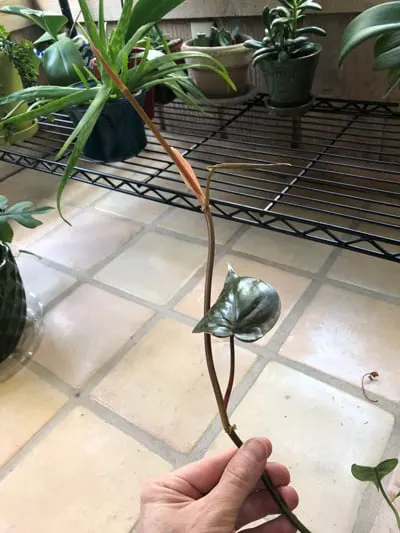
Simple take cuttings of the vines and you can propagate in water or soil. I like propagating in water because you can see the roots growing. Then you can transfer to soil.
You can see where the leaf and petiole (which is like the leaf “stem”) is attached to the vine. This is called the node. If you look closely you can also see the beginnings of aerial roots growing out of the node.
Once placed in water, these will grow pretty quickly.
You can take multiple cuttings off the same vine. Just make sure that you have at least one or two nodes under water to grow roots, and also leave one or two leaves on each cutting.
Once you have roots growing, you can pot them up in soil. I like to wait until roots are about an inch (or about 2 1/2 cm long) long and then will pot them up in soil.
POTTING SOIL
And last but not least…potting soil. Philodendrons aren’t too picky with potting mixes, but I generally will take whatever all-purpose potting mix I have on hand, and throw in good amount of perlite into it.
Perlite serves multiple purposes. I don’t really measure things out too much, but I would say to use about 1 part perlite to 3 parts potting mix. That’s a good rule of thumb.
Perlite will increase the drainage for your potting mix. It will also fluff up your soil a bit. All of this results in more oxygen for your plant roots, which is a good thing.
Adding perlite will also help to minimize the effects of “overwatering” because there will be more oxygen at your plant roots and this helps decrease the risk of root rot.
I always add some coarse horticultural grade perlite to just about all my potting mixes for tropical foliage plants for all the reasons I mentioned above.
POTHOS VS. PHILODENDRON
Not sure whether you have a pothos or a philodendron? Many beginner houseplant growers have asked me this, and I have the answer for you. Check out my new blog post: Pothos vs. Philodendron: 5 Ways to Tell the Difference.
WHAT’S WRONG WITH MY PHILODENDRON?
SMALL LEAVES
There can be numerous reasons why your plant is putting out small leaves, but the most common is probably not having enough light!
When you purchase a new plant, it has been grown in ideal conditions in a greenhouse and the leaves are probably big and lush. Then you bring the same plant home and place it in conditions that are darker, not as humid, etc. The resulting leaves will be smaller.
Your plant simply can not look the same in your home as it did in the greenhouse that it was growing in.
What you CAN control the most though is light. Make sure that you are providing the brightest light that is appropriate for this plant and don’t shove your plant in a dark corner.
If you provide enough light, you will ensure that you will have bigger leaves, though they may not be the same size as greenhouse-grown leaves.
YELLOW LEAVES
If your plant is getting yellow leaves, it is an indication that your plant is either much too dry, or that the potting soil is staying too wet.
For more details on yellowing leaves, check out my extensive blog post Why Are My Houseplant Leaves Turning Yellow?
SLOW GROWTH
One reason for slow growth is that you may not be providing your plant with enough light.
If you are confident that you have been providing enough light, not fertilizing can also be a factor for your plant growing slowly. A good rule of thumb is to fertilize your plant throughout the active growing season.
Philodendron Scandens vs. Philodendron Hederaceum
Botanical nomenclature can be very confusing! I’ll just touch on this topic a bit and refer you to other sources in case you want to read up further on the topic.
Many sources really regard this plant as Philodendron hederaceum and not Philodendron scandens.
Many books and sources include heart leaf Philododendron as the scandens species, but according to expert sources all the following are actually all Philodendron hederaceum:
- The plain leaved heart leaf philodendron that I have written about in this post.
- The velvety leaved Philodendron micans
- And even Philodendron Brasil
So why do they look different? I will refer you to this link from a forum in the UBC Botanical Garden for the details.
Basically to summarize, plants are like people. We are all Homo sapiens. But why do people look different?
We all are people, but we all have different colored skin, different body types, different features, etc. Plant are no different!
Depending on where a species is distributed, it will evolve differently and there will be many variations of the same species found in nature. If you want to go more in depth, go up and click on the UBC Botanical Garden link.
Leave the botanical research to the experts, but for the rest of us, we can enjoy growing all the amazing plants out there!
HEART LEAF PHILODENDRON TOXICITY
This plant is toxic to cats and dogs because of calcium oxalate, according to the ASPCA.
I hope you’ve enjoyed this blog post on Philodendron scandens. Do you have any in your collection? Comment below!

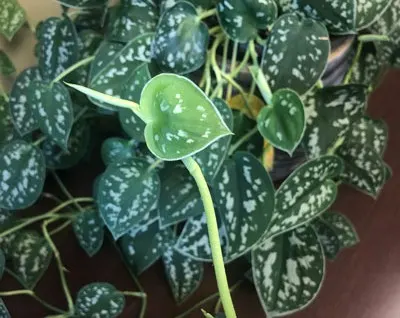
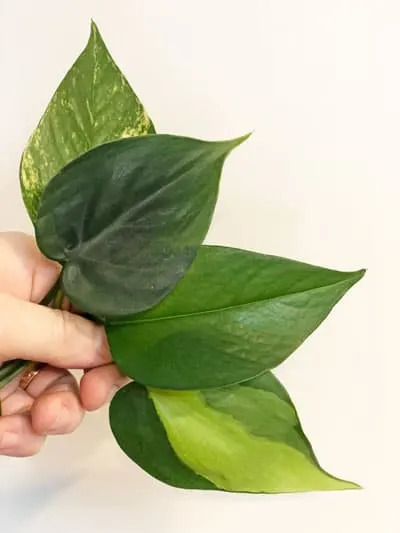
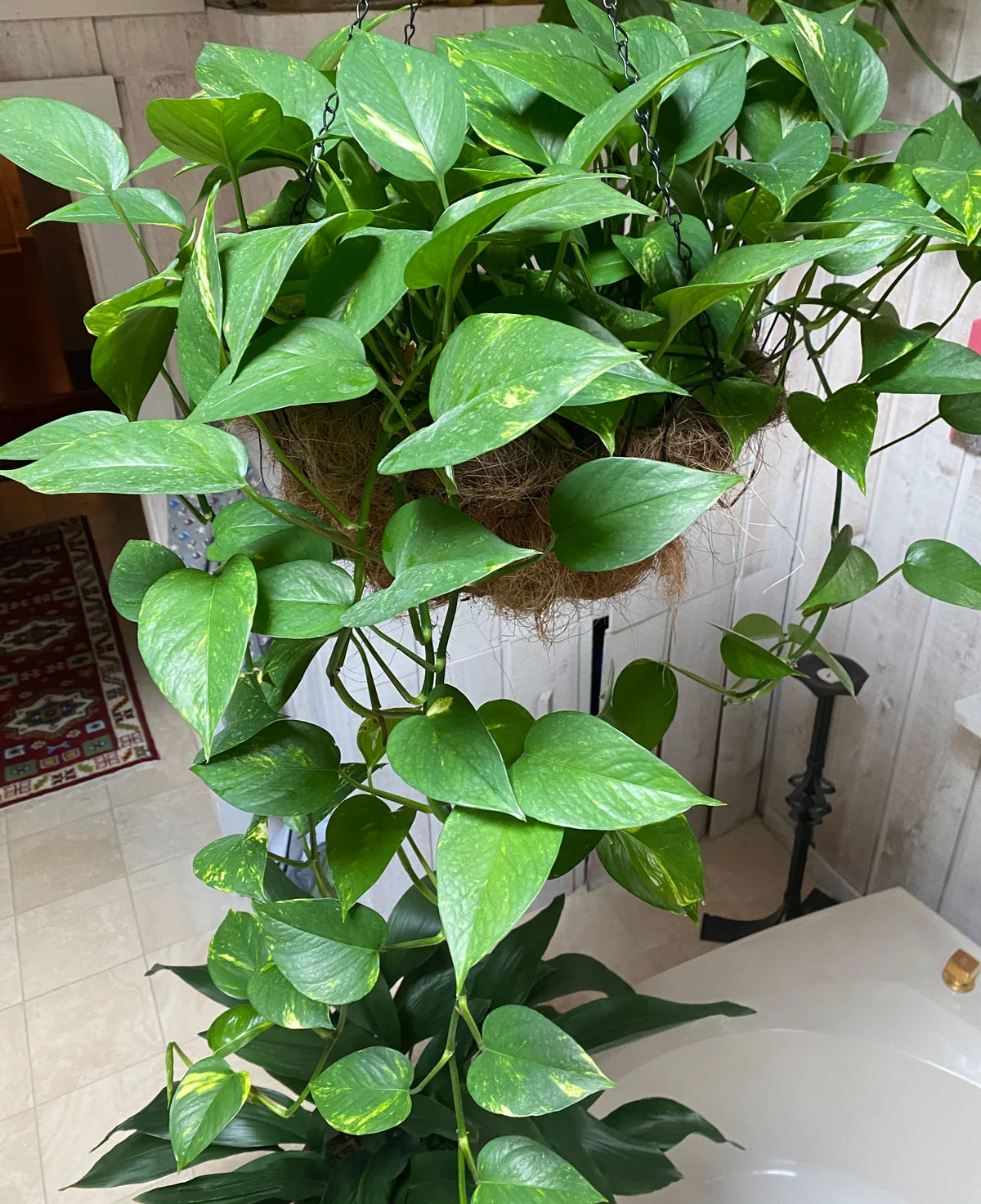
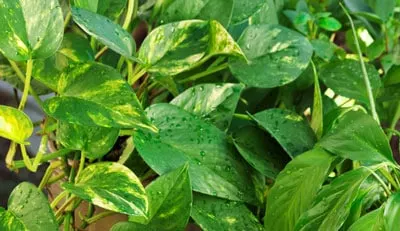
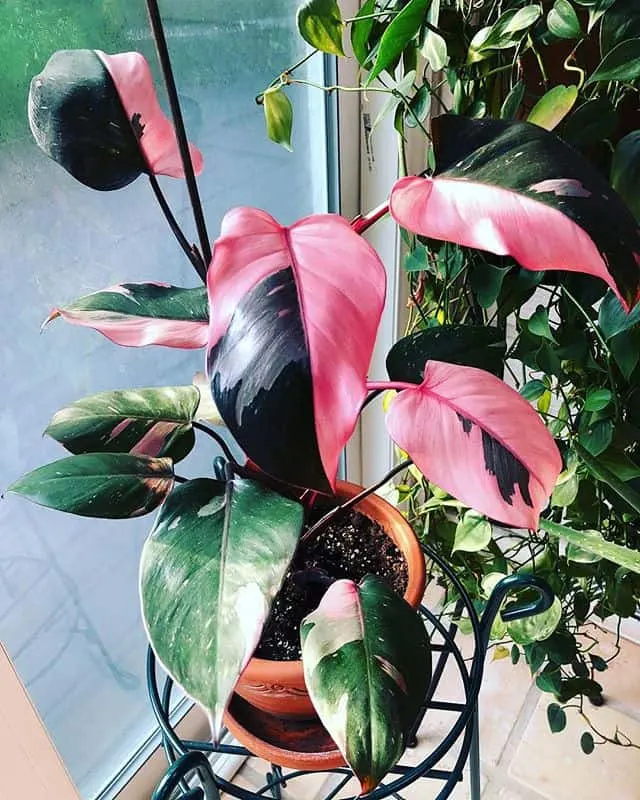
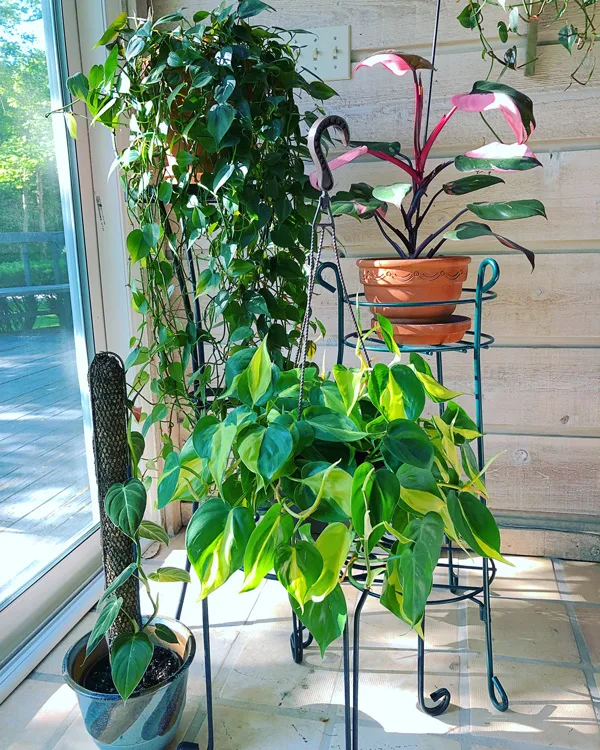
Apple
Saturday 8th of January 2022
Do you have a favorite fertilizer to use?
Raffaele
Monday 10th of January 2022
I use Dyna-Gro Grow for almost all my plants :-)
Samantha
Tuesday 19th of October 2021
Sooo I have a very huge heart shaped phil. And when moving it into our new house the original stem ripped out of the pot with no roots. Any chance it can be saved?
Raffaele
Tuesday 19th of October 2021
Hi Samantha! How long is the portion that came out? If it has no roots, and it sounds like it's very long, I would cut it up into multiple smaller cuttings and root them. Don't attempt to root one super long cutting because it will likely not be successful. I would say to do either single node cuttings, or maybe cuttings with 2 or 3 leaves at the most, and go ahead and root them in water. Hope this helps!
Melissa Monroe
Sunday 6th of June 2021
I have several Philodendrons, Pothos & 2 Scindapsis. My biggest problem is identifying plants that have no name or no tags. I have 1 plants that I'm hoping is a Debi Blue but I think it's too green & 1 that is marked Green Philodendron Scandalous but it's leaf color varies from deep Hunter Green to almost A neon. Wish me luck please in positively I.D.ing all these plants?
Raffaele
Monday 7th of June 2021
Hi Melissa! It can definitely be confusing with the lack of labeling! Good luck!